Printmann 2.0: Where there is profitability in complexity
Team PrintWeek visited the Printmann factories in Rabale, Navi Mumbai, to understand how the group is broadening its scope beyond traditional operations by investing in packaging for cartons, labels, leaflets, and foils. Read more to understand what one of the fastest-growing packaging solution providers in Western India is plotting next
31 Jan 2025 | By PrintWeek Team
Printmann 2.0 has been in the news for a while now. One is for the PrintWeek Awards on 23 September at The Westin Mumbai Powai Lake. Two, its participation at the Convention on Pharmaceutical Ingredients (CPHI) in Milan. This is the third outing by the group. Ankit Tanna, joint managing director at the Printmann Group, said, “Generating 85% of revenue from the pharmaceutical and healthcare sector. We aim to boost direct exports from 7% to 20% over the next two years, targeting Europe, North America, the Gulf countries and Africa.”
The third reason is Somerset’s investment in Printmann. Ankit says, “It is a minority investment by Somerset Indus Private Equity.” The funds have come in the form of a primary investment in the company for Printmann’s growth prospects. He adds, “The funds will be deployed to accelerate Printmann’s growth through organic and inorganic growth initiatives.”
Mayur Sirdesai, partner at Indus Capital Partners said, “Printmann is our fourteenth investment and in Printmann we saw great promoters and a talented team. The company has great infrastructure and what it needs to scale up. We are excited to be a part of the Printmann family and we will do whatever it takes to support the growth.”
Tejas Tanna, joint director at the Printmann Group concurs. He says, “We are pleased that our investment will allow Printmann to continue its growth path into new markets and materials. We serve brand owners and end-users, who use Printmann solutions for pharmaceutical and healthcare packaging of premium products.”
Tejas says “That’s perhaps how Printmann bagged two Prisms at the 2024 edition of the PrintWeek Awards.”
The game is afoot
When we visited the Printmann factories in Navi Mumbai, the most important thing we noticed was customer care. Closer cooperation always helps, says Tejas. He adds, “We are on our toes, always. And it is a boon. It has helped us build a robust value chain for our customers. Every customer has helped us to understand our scope of improvement and highlighted our strengths simultaneously.”
Also, we noticed the small things that made a difference. For example, a paper storage system. Ankit says, “No point purchasing high-quality paperboard if the moisture profile of the board is not being maintained or constantly monitored. How else will the presses be fed with consistent sheet flatness?!”
Ankit says, “Even the automated processes are examined to understand production capacity and if it can be increased by 50%. Also the kind of data and tests which are required for superior quality to be achieved.”
Does it help reduce the learning curve, we ask the Tannas. They reply, “More importantly, the systems help us take a leap across the innovation gap. Packaging in India is enjoying a virtuous cycle, and we are very clear that as a packaging converter, we can’t be caught in a mid-tech trap.”
The Printmann journey
Established in 1987 by Bipin Tanna, Navi Mumbai-based Printmann began its operation as a commercial printing company before venturing into the pharmaceutical segment for packaging products such as leaflets and cartons.
Today, PrintMann has four business verticals: cartons, foils, labels and leaflets. The company is currently managed by Bipin and his sons, Tejas and Ankit.
A report by McKinsey & Company from August 2024 says, “In India, family-owned businesses contribute more than 75% of national GDP, one of the highest percentages in the world, and this is likely to rise to 80 to 85% by 2047.”
Succession planning is an ongoing process and each family business is unique, requiring a tailored approach to ensure a smooth transition of leadership. One tip is to start early and not wait till the next generation is in their early twenties.
The two Tanna siblings were introduced to the printing and packaging fraternity early in life. They developed an idea of functionality and engineered the technologies. Bipin says, “The best method is show and tell. It helps in conceptual clarity as well as in the analysis of products. Once they understand the basics, they start to monitor the supply chain, to detect the problem areas, to create a troubleshooting handbook.”
Even today, Bipin, says, “We ensure we update and upgrade ourselves as per the suggestions by our customers as well as the auditors. We endeavour to introduce global practices and systems on our factory floor.” The Printmann mantra is: Be humble and learn to listen, carefully.
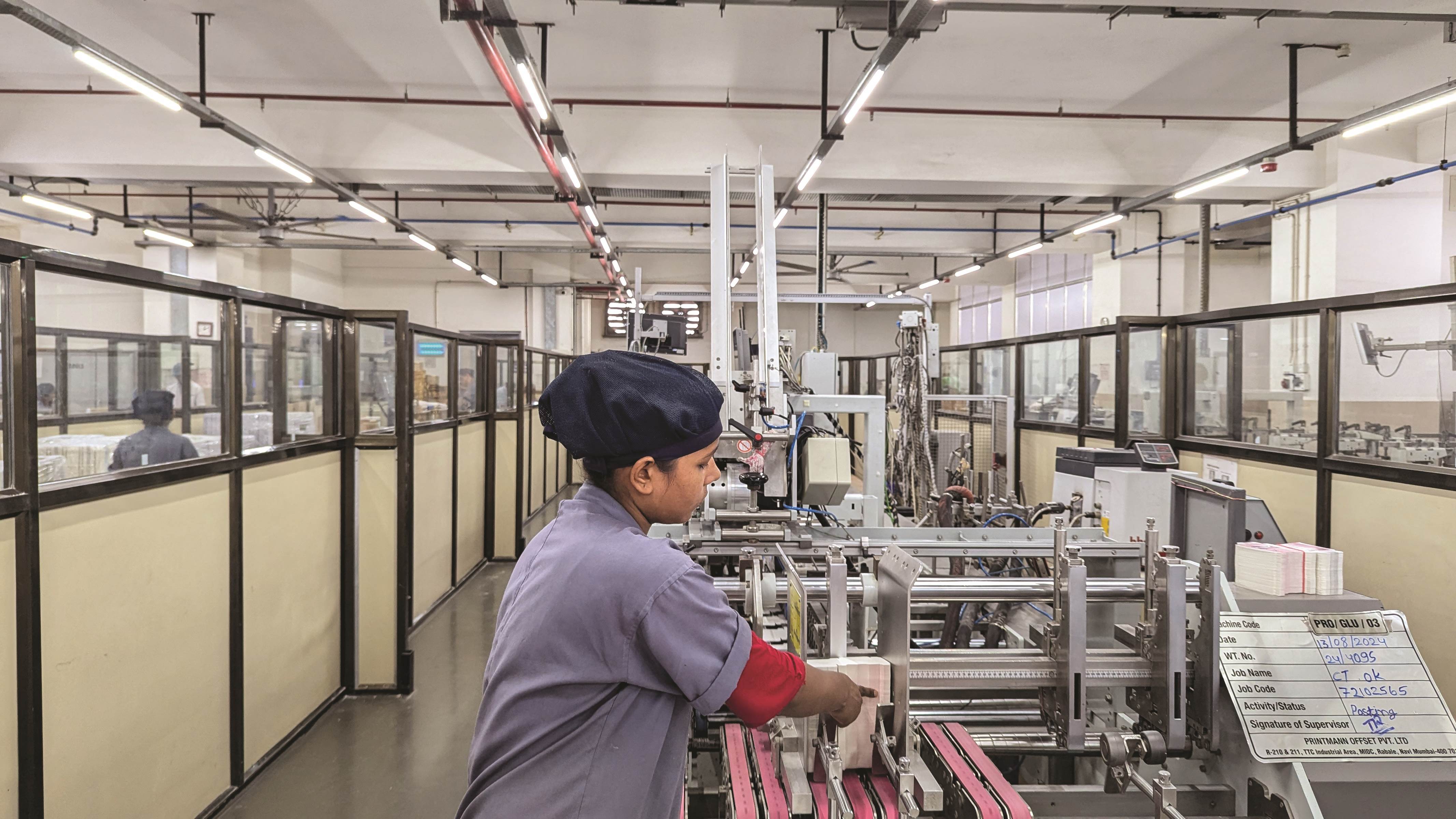
How Printmann has transformed itself
One thing Bipin has been clear about is how to expand the business. And how to deploy minimum space for maximum utilisation. He says the industry has underestimated its clout by calling itself a printer or converter. He says, “We are packaging solution providers.” And in real terms, it means new product developments and innovations.
That’s how Printmann announced a new initiative — its subsidiary Pakcellence which would make “inroads into innovative and sustainable solutions like the gable top business.” Bipin Tanna says, “For quite some time, we at Printmann, were pondering over various projects to chalk out our future growth path and go beyond the pharma-centric packaging domain.” There were several ideas and some of them were in totally new terrain. But, as Bipin says, “Our strong belief was that a successful diversification can
be built by playing out the core strengths to our strategic advantage and borrowing from like-minded people who bring in complementary strength .”
According to Ken Research estimates, the Indian liquid packaging market has witnessed a CAGR of seven per cent over the last five years. Due to pent-up demand in the post-Covid era in the end user sectors, the liquid packaging industry also witnessed a steep year-on-year growth of approximately 20% in FY22.
The Tannas delved into what the key value drivers for this business could be. They thought of offering a complete value chain solution: from hand-holding upstream processing and partnering with a filling machine that is backed by R&D to a strategic alliance on the substrate front.
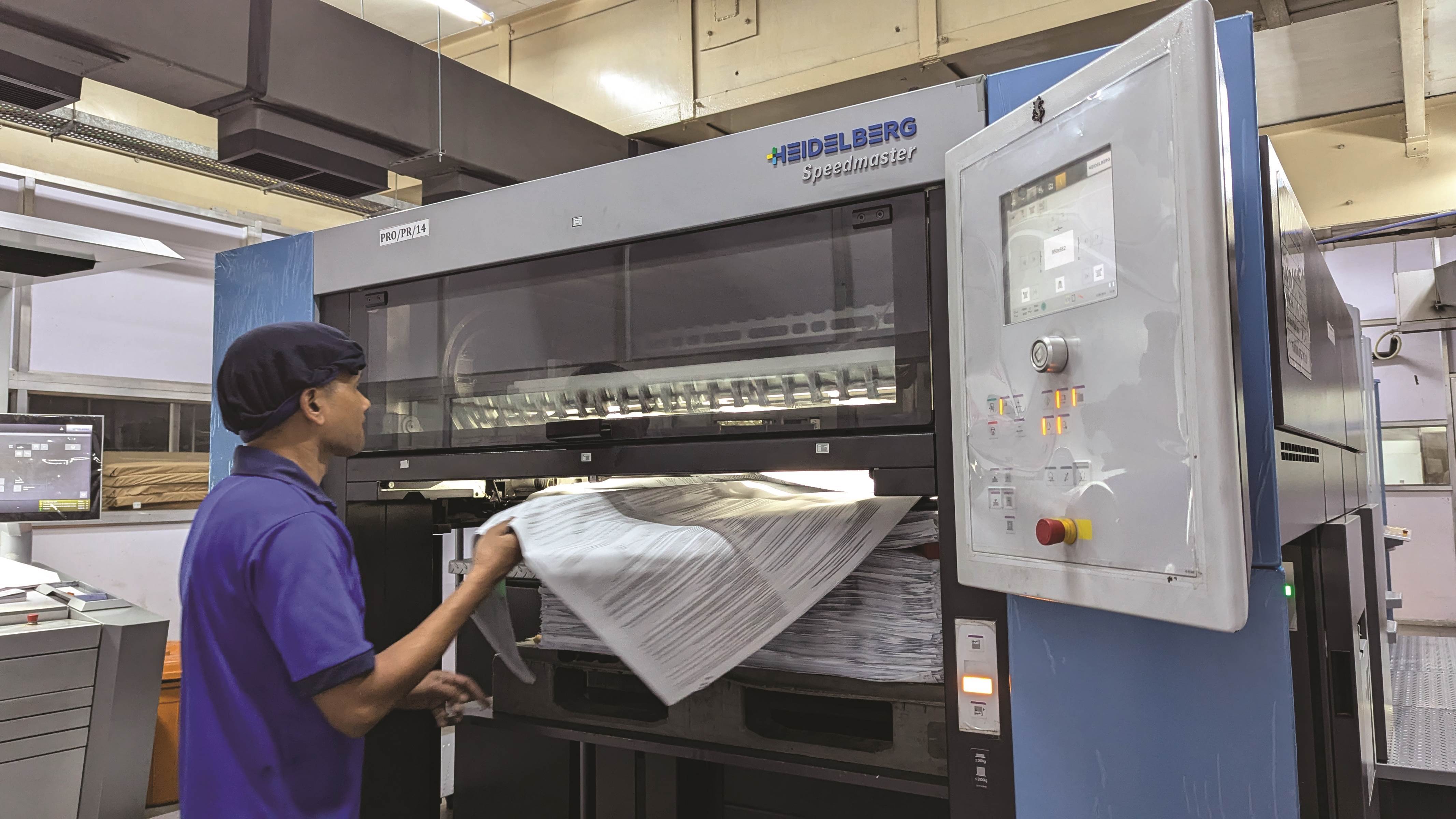
The man-machine-materials mantra
Printmann believes in updating the man, updating the machine, and finally, updating the materials. The Tannas truly believe that the printing press is a marvellous money machine; an ingenious device that changed the course of human history — as long as the entrepreneur knows what to build (and rebuild) with it.
Consider Printmann’s Koenig & Bauer investments in 2021 and 2023. These were the KBA 105 seven-colour Combi and the KBA 105 six-colour Combi presses. The Tannas concur that it is the most sophisticated, multimillion-rupee investment in the Printmann plant.
Be it a Bobst or a K&B, Ankit says, “Printmann chooses a partner and then works with that partner. As part of our expansion plans for the carton division, we had envisaged and budgeted for two presses. Once we installed the first KBA, buying the second one was a natural choice for us.”
Team PrintWeek was wowed by the 38-metre long, 167-tonnes, full of automation plus energy-saving devices that drove the KBA 105 seven-colour Combi press. It has seven colour units and one coater which can run both UV and conventional inks.
The largest sheet it can accommodate is 1,060-millimetres by 1,450-millimetres, up to 1.2-millimetres in thickness. The seven printing units can add special colours and effects, apart from the usual CMYK, adding versatility to the jobs produced.
The company also installed the Bobst Novacut 106 3.0 die cutter with Accuregister. The company products 550-million cartons, 360-million leaflets, and 1,200-tons of foils and laminates annually. Tejas says, “Productivity and cost-effective post-press production are our topmost priorities. Our machines serve our requirement of highly complex packaging, plus value addition.”
Team PrintWeek saw production speeds up to 18,000-sheets per hour, fast make-ready, the ultimate in automation and precise inline quality control systems.
Anandababu B, general manager at the Printmann Group told us, “There are other factors too. For example, the type and quality of board, standard pressroom ink and chemicals and run length. There is also the relative compactness and the touchscreens and apps used to control and monitor everything including job changeovers, production and quality control processes.”
And the key to new investment? Bipin says, “Technology upgradation, as well as the new features which are required by the industry. You have to stay one step ahead in this game.”
Printmann scours for one more factory
Today, Printmann has three factories in the Western part of India, occupying a manufacturing space of 1,40,000-sqft. One of its factories, which spans 60,000-sqft, was built during the pandemic and is a fully equipped carton manufacturing factory. All of the factories have the best-in-class equipment and are ISO 15378, BRC:IOP AA accredited, and Sedex approved, in addition to having ISO 9001:2015 certification.
Printmann Foils, Printmann’s standalone facility in Vasai, is responsible for catering to the needs of aluminium printed foil. The facility spans 30,000 sqft and conforms to all cGMP standards.
With the basket of products the company offers, and the trust of the value chain, Printmann has seen a 15% growth in revenue. More than 80% of the revenue of Printmann Group comes from direct and indirect exports.
To add to this Printmann has undertaken various measures towards being EHS compliant and also has a consultant on board for EPR compliance.
Eyeing expansion through inorganic growth, Printmann has decided to go pan-India. The Tannas are seeking a partner. This is to ensure the Printmann factories have the capacity to cater to the domestic customer and reduce the transit time while Mumbai remains the export hub.
Tejas says, “A few months into this partnership, Somerset encouraged us to dream big. We had ambitions of growing 10-15% annually, but this partnership has given us the confidence and the capital to do so and dream bigger.”
Whatever the Somerset package may do, only time will tell. But, the PrintWeek audit says that the PrintMann approach is more like a marathon than a sprint, focused on making the company’s manufacturing framework more durable and more resilient.n










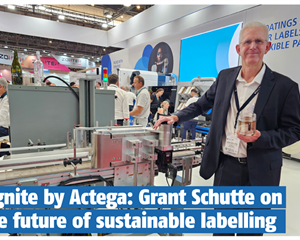
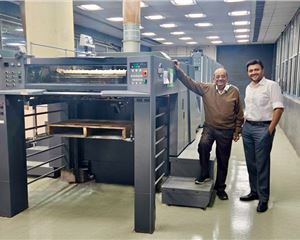
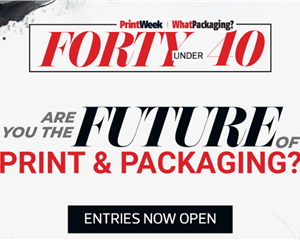
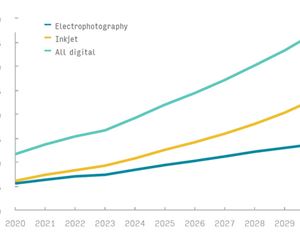
 See All
See All